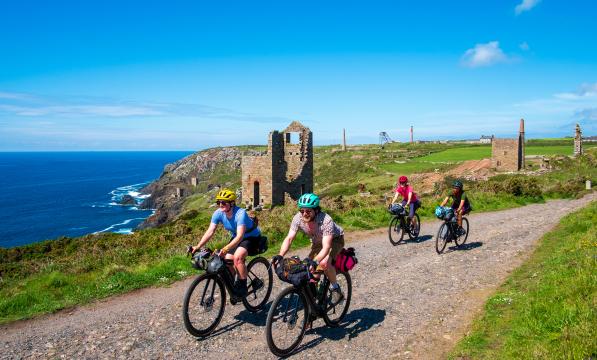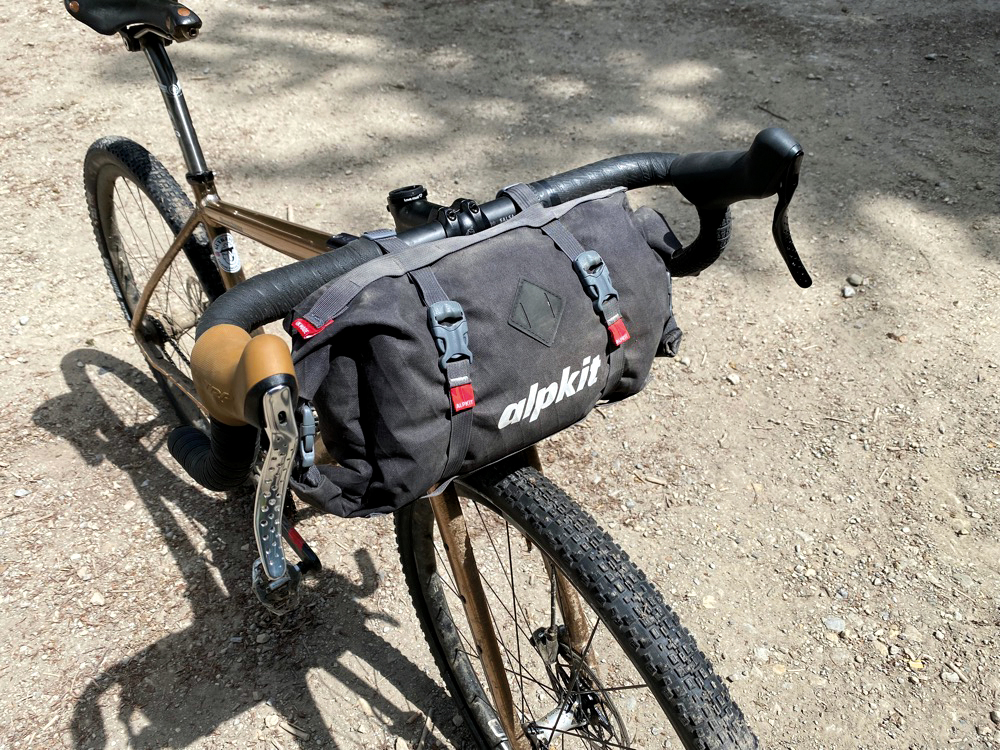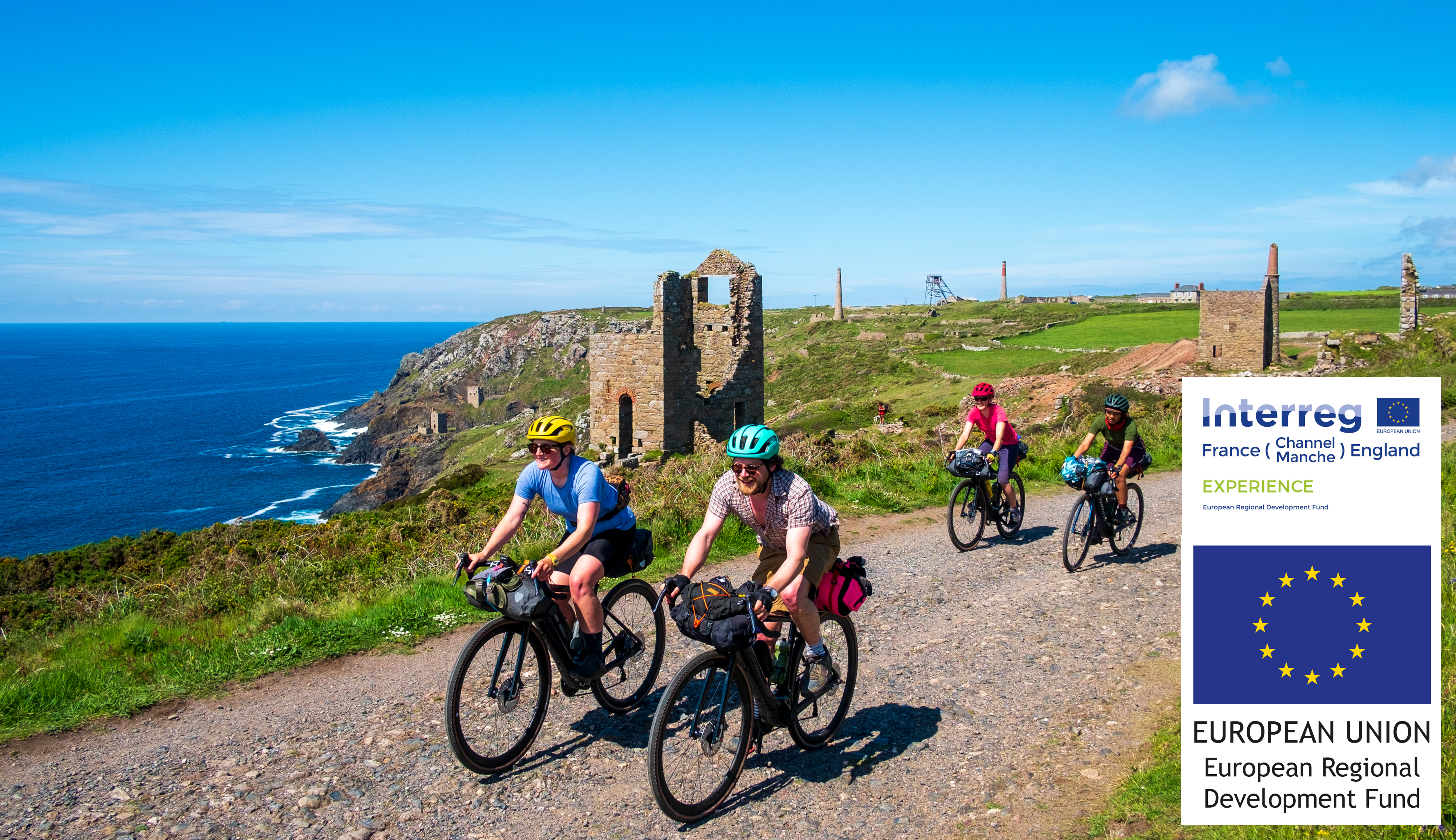Guy Kesteven: The West Kernow Way

Land’s End to St Just
From Land’s End, follow the bike path back past Sennen Cove, being sure to project the steely-eyed determination of a long-distance legend heading for John o’ Groats. You then join the main road for a short section before peeling off onto the B road to St Just under the ancient gaze of the hill forts, hut circles and cairns of Carn Brea, and Bartine Castle.
When the road turns sharply right downhill after the grandly named Land’s End Airport – the departures board only features the Scilly Isles – carry straight on into the Cot Valley on a typically narrow Cornish back lane past St Just Youth Hostel towards the National Trust-owned Progo Cove.
Lost Way section at St Just Youth Hostel
Here, a short stretch of footpath separates the road leading from the airport and the coast. Historic evidence shows that this route was almost certainly a vehicular highway, and we have submitted an access claim on that basis, but we’re currently advising you to dismount and push along here just to avoid any conflict with nearby residents.
One you’ve pushed onto the bridleway you climb steadily on a grassy, stony track up to a chambered cairn and incredible views: south to Sennen, west over the ship-eating Brisons rocks and north to Cape Cornwall itself, with its tall mine chimney sat on top like a spire. The descent to Priest’s Cove is wide and mostly straight but it’s also made of chunky, loose rocks and finishes with a couple of tight turns, so treat it with plenty of respect. An optional couple of hundred meters diversion to Cape Cornwall lookout station gives you an early view of Kenidjack Castle, then it’s a steep but thankfully very short road climb before a level cruise to the edge of St Just.
Mining in Cornwall
While Cornwall only accounts for 0.02% of the land surface of the earth, you can find over 90% of the known types of minerals here, including copper, iron ore, gold, China Clay and - most importantly - tin. This soft, silver, singing metal (it can squeal if you bend an ingot or hit a seam underground) is the vital 10% that turns decorative copper into sharp tool, armour, and weapon quality bronze, and it’s only found in a few areas in Europe.
The rich tin deposits in the Cornish peninsula put it on the map for traders as far away as the eastern Mediterranean and Greece. There’s clear evidence of extensive foreign trade in the archaeology and it’s mentioned by Greek historian Herodotus around 500 BC. One legend says that a young Jesus may have even come here with metal trader Joseph of Arimathea.
Trade gave the area great importance and helps explain the high number of forts, settlements and other remains from the prehistoric period. Its significance continued into the Iron Age, and Ding Dong mine near Zennor was working during the Roman period.
The importance of tin declined as iron and steel were developed, and it wasn’t until the development of the first steam engines to pump water out of the mines that Cornwall really hit the big time again. Not only were its minerals - including China Clay used in porcelain - exported all over the world, but the knowledge of its engineers and miners was prized anywhere shafts and pits were being sunk into the ground. The boom time for Cornwall continued until the end of the 19th century until prices declined and mines rapidly closed, creating a deep local depression only partly offset by the increase in tourism enabled by railways.
Recent increases in prices and the discovery of battery quality lithium mean that Cornwall’s mining industry is now potentially re-awakening once again.

St Just to Trewellard
From St Just it’s back to the rugged Atlantic coast overlooking the iconic Kenidjack Castle, and then you follow the tracks of the tin miners north, past the ruins of the engine houses and spoil tips of Wheal Edward Zawn, Zawn a Bal and other unnamed mining sites.
Now totally deserted and stripped bare by the often violent coastal weather, it’s hard to imagine that this stark landscape was once thronged with miners and horse-drawn mine carts, and seething with steam and smoke of the heaving pump engines. The shafts from these pits didn’t just dig hundreds of metres vertically into the earth but would also regularly extend several kilometres out under the seabed following the precious lodes. Cornwall was recognized as the ‘Silicon Valley’ of the whole world in terms of industrial mining innovation. The more intact National Trust-owned mining complex of Levant Zawn, with its preserved beam engine, brings that into clearer focus and the area is now part of the Cornwall and West Devon Mining Landscape UNESCO World Heritage Site.
Trewellard to Nancledra
Once you’ve exhausted this fascinating historical lode, it’s time to stoke up your own steam engine for the steady climb up through the small village of Trewellard to Woon Gumpus Common.
Not only is Woon Gumpus one of our favourite names on the route (and there are some splendid contenders to choose from) but it’s an archaeologically rich and remarkably remote-feeling part of the peninsula. It also forms part of the Tinners Way trail, which follows the tracks that millennia’s worth of West Cornish tin and other materials have been transported along to the rest of the UK and Europe. That makes it impossible not to let your mind wander through the lives and worlds of those who have gone before you, though a landscape that still seems wild and untamed despite traces of our ancestors dating from 10,000 years ago.
Lost way section: The Tinners Way
A modern title for an ancient ridgeway track, believed to date from prehistoric times and following the watershed of the uplands of West Penwith. The point where we join the Tinners Way passes along a well-surfaced old lane. The stone gateways and surface make it obvious that this is a well-established route, and more than wide enough for horse and cart. Further along from here the route is recorded in places as footpath, but the evidence once again points to higher status in the past.
As we continue along the route, we pass several historic landmarks that would have been important for navigation, and the linear path this route takes, threading between these features towards St Ives, once again points towards the antiquity and historic status of these ancient trackways. This is further supported by discoveries of everything from Bronze Age gold hoards through to Roman coins.
Finally, our route crosses some narrower moorland tracks, with a much wilder feel - but still consistent with the historic mapping that showed this route as branching off to continue across the landscape before joining up with the highway network further inland.
This part of the Tinners Way is fast going at the start too, as you fly along rough road and farm tracks south of Chun Castle, with its nature reserve and rebuilt quoit stone monument. The perfect gravel bike surface continues, with the wide-open landscape rising and falling gently as you pass the enigmatic holed stone at Mên-an-Tol. The Nine Maidens stone circle comes shortly after, and both are well worth a short diversion on foot to the south of our route.
The reputed oldest tin mine in Cornwall - the Ding Dong mine - is less than a kilometre off the route too if you don’t mind a short walk over the moor. However, you’ll need to be tight on your navigation here, even if you don’t detour, as the local ponies grazing the moor can leave a confusing web of paths to follow.
A short dog-leg north around a prehistoric hut circle settlement, and your skills as well as your navigation need to be on point as the bridleway becomes a narrow tyre-width rut. Lots of small steps, peaty puddles and larger rocks hidden in the heather create a real challenge to anyone who doesn’t just surrender and start walking straight away. This is definitely the wildest-feeling section of the whole route too, with no signs of civilisation later than the Bronze Age, and weather that can often cloak in around you silently and create an eerie atmosphere.
After a short section of road and gravel track it’s back onto moorland singletrack over the Lady and Amalveor Downs, passing more tumuli on the tops of the rolling hills before a rapid and rocky descent to the road above Amalveor itself. We’ve already flagged this up in the ‘Be aware’ section opener but it’s worth pointing out that the loose rocks on this section can be a real puncture risk. We ended up with a pump in our hand and a couple of plugs in our tyre on the recce ride even running tubeless.
The roll down the road to Nancledra is of the more relaxing kind and then you cross the upper reaches of the Red River on its short journey south to Marazion.

Nancledra to St Erth
A traversing climb up narrow, hedge-lined roads brings you to the next bridleway section just as things level out slightly. This 2km stretch includes a lot of tight hedge-lined singletrack which holds moisture, and it seems to be popular with horse riders too, so it can be very wet and muddy even in summer. That’s one of the reasons we’ve added the Trencrom Hill diversion, but if you’re happy to deal with some mud, the gradient is in your favour, and you’ll soon be bursting out of the bushes and onto the gravel tracks for the descent towards Canon’s Town.
Trencrom Hill
To be honest, Trencrom Hill had escaped us entirely until we were on a recce ride for another route when a herd of escaped cows distracted us from our intended bridleway route and this happy accident brought us to the foot of Trencrom Hill. While the top is only accessed by footpath, we’d definitely recommend hiding your bike in the bushes at the bottom and taking a hike to the top.
Here, you’ll get magnificent views across to the coast on both sides as well as west and east over Penwith and the Lizard. This includes St Michael’s mount, where legend tells that the resident giantess Cormellian was killed by a hammer thrown by Trecobben, the giant who lived on Trencrom Hill. Whether you believe in giants or not, the very easily defended rocky slopes mean it was occupied in the Neolithic period, and the hut circles on the flat top date from the Bronze and Iron Age periods, marking it as a key seat of power in the area for thousands of years.
It’s a mark of just how remote the rest of this route has been (even if you swerved into St Just for pasties and ice cream) that even this broad road lined with random detached houses seems very suburban and quite a shock to the system. The dog-leg crossing over the busy A30 ramps up the rude awakening but at least there’s a bike lane and separate turning position in the centre so you can scuttle across safely.
After a steady climb up across the railway line to Penzance (it’s only about 8km away at this point) you double back and then double back again, to wind up past the gorgeous Grade II listed 18th century mini manor house at Tredrea. The bridleway takes you up around to the equally gorgeous, and certainly larger, Grade II listed 17th century Trewinnard Manor (we smell a local manor competition back in the day) where you can now rent a holiday cottage with an outdoor pool if you’re feeling fancy.
Then it’s a drop down through the woods and up the far side to complete your bypass of St Erth, though obviously you can miss the manors if you’d rather dive into town for some sustenance or even an overnight stop. It’s also an obvious place to end this section as the route crossover occurs further along the generally deserted, dirt-centred road after it dives steeply down to cross a ford and then climbs up along Countess Bridge Lane. You’re also within a few kilometres of St Ives, Marazion and even Penzance if you want a more substantial place to take an overnight break.







